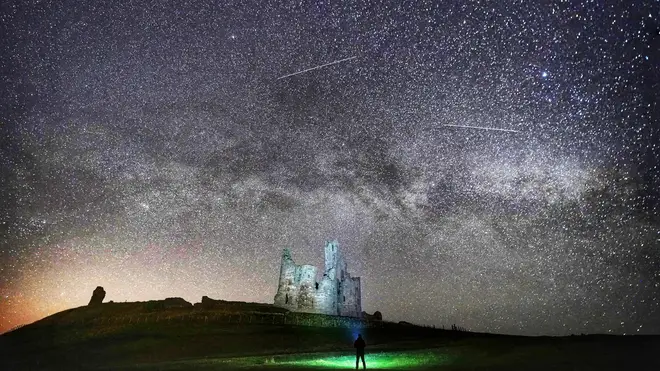
Clive Bull 1am - 4am
19 October 2020, 16:24

They suggest this heated halo was the incubator for our galaxy’s formation some 10 billion years ago.
The Milky Way is surrounded by a clumpy halo of hot gases that is continually being supplied with material ejected by birthing or dying stars, astronomers say.
They suggest this heated halo, called the circumgalactic medium (CGM), was the incubator for our galaxy’s formation some 10 billion years ago and could be where basic matter unaccounted for since the birth of the universe may reside.
The findings come from observations made by HaloSat, which is primed to look at the X-rays emitted by the CGM.
Writing in Nature Astronomy, the researchers conclude the CGM has a disc-like geometry, based on the intensity of X-ray emissions coming from it.
Philip Kaaret, professor in the University of Iowa’s department of physics and astronomy, and corresponding author of the study, said: “Where the Milky Way is forming stars more vigorously, there are more X-ray emissions from the circumgalactic medium.
“That suggests the circumgalactic medium is related to star formation, and it is likely we are seeing gas that previously fell into the Milky Way, helped make stars, and now is being recycled into the circumgalactic medium.”
Every galaxy has a CGM, and these are crucial to understanding not only how galaxies formed and evolved but also how the universe progressed from a kernel of helium and hydrogen to a cosmological expanse teeming with stars, planets, comets, and all sorts of other celestial things.
The HaloSat minisatellite was launched from the International Space Station in May 2018 and is the first minisatellite funded by Nasa’s Astrophysics Division.
It was launched to search for atomic remnants called baryonic matter believed to be missing since the universe’s birth nearly 14 billion years ago.
The satellite has been observing the Milky Way’s CGM for evidence the leftover baryonic matter may reside there.
The researchers wanted to find out if the CGM is a huge, extended halo that is many times the size of our galaxy – in which case, it could house the total number of atoms to solve the missing baryon question.
But if it is mostly made up of recycled material, it would be a relatively thin, puffy layer of gas and an unlikely host of the missing baryonic matter.
Prof Kaaret said: “It seems as if the Milky Way and other galaxies are not closed systems.
“They’re actually interacting, throwing material out to the CGM and bringing back material as well.”
The next step is to combine the HaloSat data with data from other X-ray observatories to determine whether there is an extended halo surrounding the Milky Way and, if it is there, to calculate its size.
Researchers say that in turn could solve the missing baryon puzzle.